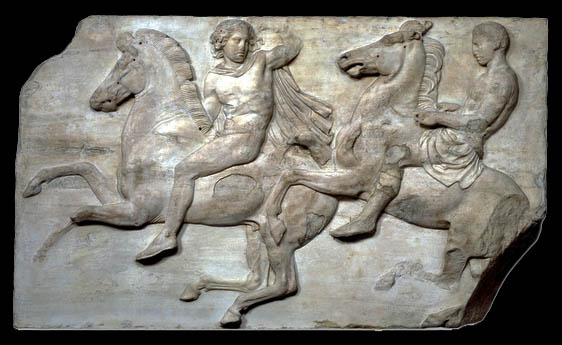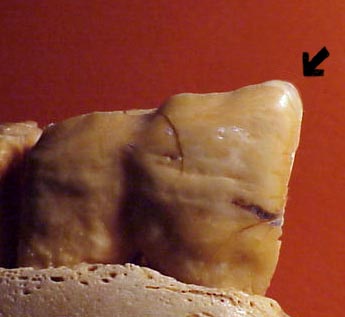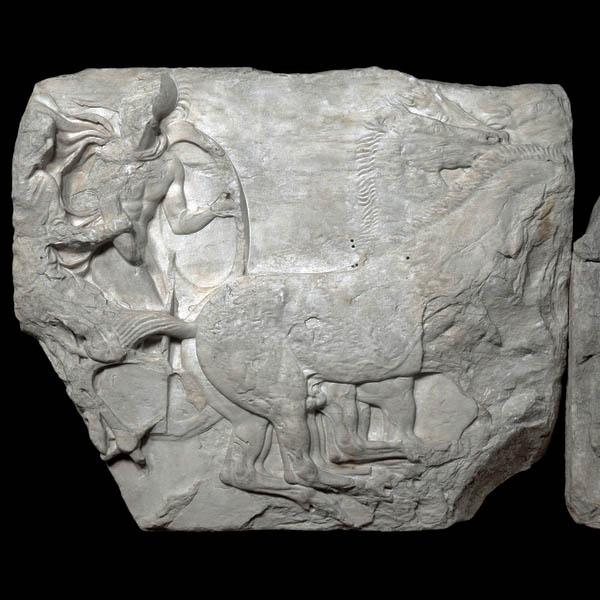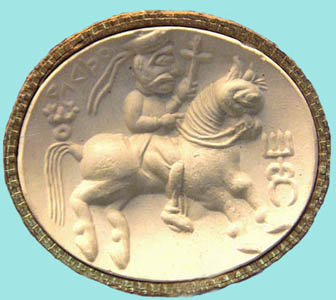So, You Think You Love Horses?
Some Reflections on the Nature of Horses and Man
More Discussions by “The Accidental Horseman”
The History of Horse and Man
Horses and Riders from the West Frieze of the Parthenon 438-432 BCE
(Courtesy: British Museum)

|
In a prior discussion I spoke about the evolution of the horse and carried the story up to the point of the species’ domestication by man. Humans for generations uncounted were hunter-gatherers. It might be said that hunting (perhaps more of a male activity) progressed in time to animal husbandry, and that gathering (perhaps more of a female activity) progressed to agriculture. In both cases, people collected to themselves that which previously they had expended much energy and time to find in the wild.
In the case of agriculture it is believed that the cast off seeds of plants that humans discarded grew up around old campsites, and someone eventually got the epiphany to collect the seeds and plant them. The roots of animal husbandry began when men adopted immature orphan herd animals and discovered that the animals could be tamed and would willingly cede the leadership role to humans. In both cases, man soon recognized that selective breeding could produce a plant with a larger fruit or an animal that was easier to handle. Archeological evidence points toward sheep and goats being among the earliest domesticated animals followed by cattle and pigs somewhat later.
Evidence of bit wear on the leading lower premolar tooth (P2)
is believed to be evidence of the use of a medal bit.
|
| 
|
The first interaction between horse and man was that of hunted and hunter. A horse shoulder blade from the Boxgrove site in England shows a hole made by the impact of a wooden spear. The depiction of wild horses on the wall of caves at places like Cantabria, Lascaux and Montespan testify to man as both a hunter and artist.
The domestication of the horse is now believed to have occurred about 4000 B.C.E. (Before Common Era) on the Eurasian steppes, perhaps in the modern Ukraine or Kazakhstan by a community of people, known as the Botai culture . One archeological site, called Krasnyi Yar in Kazakhstan, dating from 3000-3500 B.C.E., contains evidence of a corral. There were regularly placed post holes and high levels of phosphorus in the enclosed soil indicative of manure. In addition, there were large numbers of horse bones recovered at a human habitation site at a time when wild horse populations were falling. Additional evidence of the domestication of the horse concerns wear patterns on teeth consistent with using a bit and the skeletal remains of horses showing up in areas outside of the natural habitat of wild herds. A DNA analysis showed the species of horses they were using were Przewalski's horses. One mystery is what became of the Botai. They appeared to be very successful for generations and then just disappear. Their genome has been typed and is absent in modern populations. In the following centuries other steepe people would tame Equus ferus caballus and spread horses far and wide.
The earliest burial mounds containing remains of chariots date from 2000 B.C.E. and can be found in sites of the of the Sintashta-Petrovka culture in modern Russia. The first written records of any kind date to about 3400 B.C.E. in Mesopotamia and shortly thereafter, in Egypt. Records of these great civilizations suggest that neither of them originally knew of horses. The Sumerian term for a horse was ass of the mountains and first appeared in their written records about 2100-2000 B.C.E. That the name “ass of the mountains” was applied to horses suggests that the Sumerians were originally familiar with asses (donkeys) but not horses. The Hyksos introduced the horse and chariot to Egypt during their successful 16th Century B.C.E. invasion of that country. In a time period estimated to span about 500 years, the use of horses and chariots diffused to all the major advanced cultures of Eurasia: Egypt, Mesopotamia, India and China.
Horses Pulling a Chariot from the South Frieze of the Parthenon 438-432 BCE
(Courtesy: British Museum)

|
|
However, the spread of the domestic horse is only part of the story. Those who rode these early domestic horses appear to have successfully spread the Indo-European language as well. The field of comparative linguistics was slow to get off the ground, and for many years people did not understand that there is a gradual evolution occurring in all human languages, including our own even today. In 1786 Sir William Jones, an English judge and scholar, living in India, noted the similarities between roots of words in the ancient Indian language Sanskrit, and classical Greek and Latin. Since that time the existence of a series of related Indo-European languages has become well-accepted. The striking thing is just how widespread this language group became. Indo-European speaking cultures existed from the British Isles across Eurasia all the way to Western China. The eastern most of the Indo-Europeans speakers were the Tocharians. They appear to be connected to those mummified remains of Caucasian-appearing individuals discovered in the Tarim Basin and ancient Buddhist texts written in an obscure Indo-European language. The dry climate of the area preserved the burial sites, and in one grave archeologists discovered a saddle cover and a pair of trousers decorated with an image of a horse's body wearing a human hat. Clearly, the horse played an important role in this culture. In his 2007 book, The Horse, the Wheel, and Language: How Bronze-Age Riders From the Eurasia Steppes Shaped the Modern World David W. Anthony presents the premise that it was the domestication of the horse that allowed the Indo-European language family to become so widespread. One might think that the more advanced cultures with written languages, such as the those of China, India, Mesopotamia or Egypt would have had an even greater geographical reach. However, all these cultures were ones that were on the defensive against the more mobile mounted barbarians, originally from the Eurasian steppes. This proposed relationship between the domestication of the horse and the spread of the root family of our own language is so obvious that it should be more well-known, accepted, and taught than it is. I never remember any discussion of this in any of my history courses. No, the focus has always been on the classical great cultures to the exclusion of those “lesser” preliterate cultures whose impact on human history may have been just as profound.
An Early Depiction of Stirrups
A Seal from the Kushan Empire of Central Asia 127–151 CE
(Courtesy: British Museum)
|
| 
|
In time humans discovered all kinds of uses for the horse: in agriculture, entertainment, industry, transportation, and warfare. Many of these uses were dependent on the invention of horse task and human interfaces. For example, things like wheels, carts, bits, saddles, yokes, sleds, spurs, and stirrups all need to either be invented or modified for use with horses. The people who first invented or used these things are unknown to history, but you must admit they must have been very courageous, very innovative, or both. Bits were an early invention and remains of them have been found at many prehistoric sites. Stirrups, which seem so obvious, were a much later invention (2nd Century C.E.) and were totally unknown to advanced ancient civilizations, such as the Romans. It was the need to turn a horse into a stable weapon platform that led to the use of the chariot rather than simply mounting a warrior on horseback. The absence of a rigid saddle and stirrups made all but the most skilled mounted warriors as likely to fall off in battle as to inflict injury on the enemy. The invention of the wheel preceded the domestication of the horse. A wooden wheel and an axle radiocarbon dated to about 3000 B.C.E. have been recovered from a marsh at Ljubjana, Slovenia. I have visions of the owner’s wife now, “Sidney, I told you not to drive that cart into the marsh.”
With the passage of time all the things needed for humans to ride horses came into existence, and those things are now conveniently available to you at your local tack shop or on-line catalog. Advances in veterinary medicine, equine nutrition and breeding allow today’s horse to be a larger, healthier and more graceful animal than its forebearers. However, I should point out that men are still driving vehicles into marshes. Some things never change.
You can expect more from…
The Accidental Horseman
Technical Discussion of Bit Wear
Back to Additional Discussions
Additional Discussion on Indo-European Language's word for Horse
Back to Index Page




